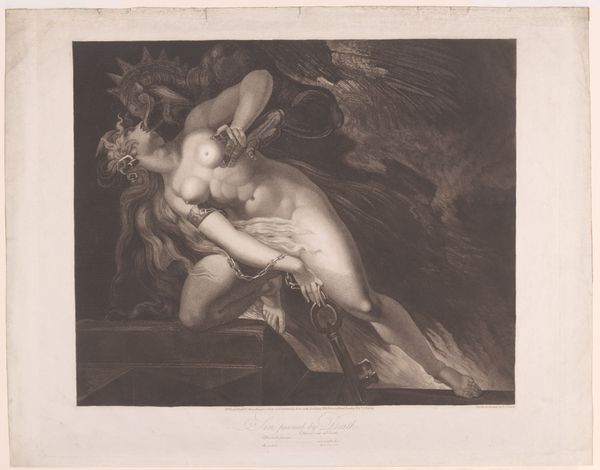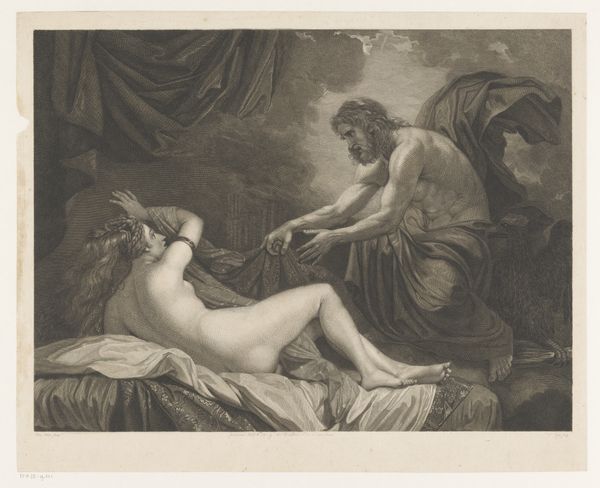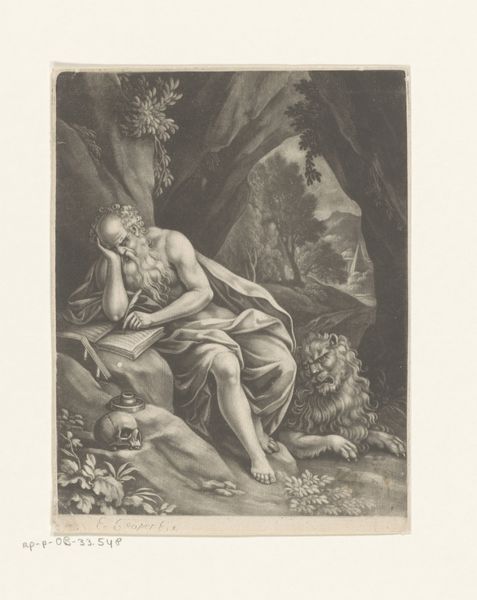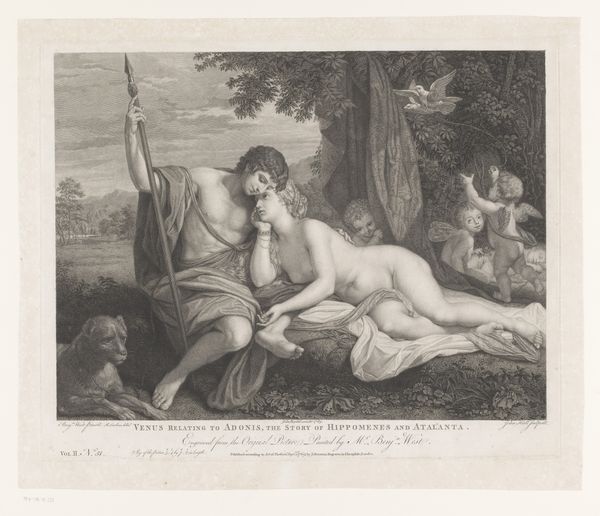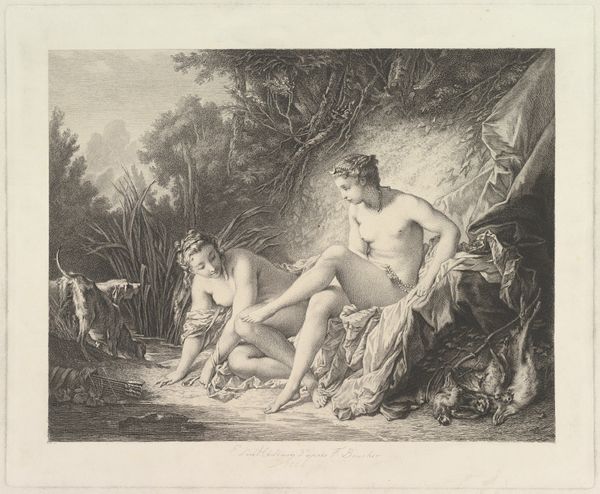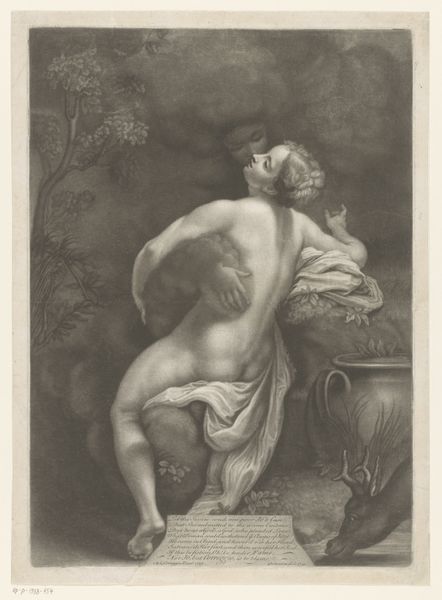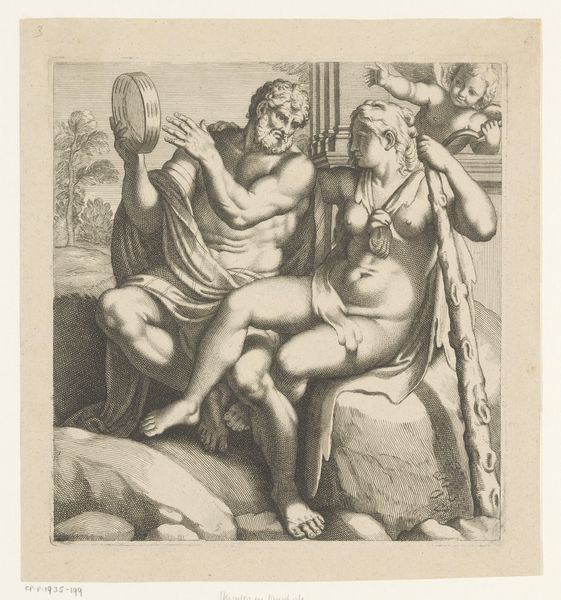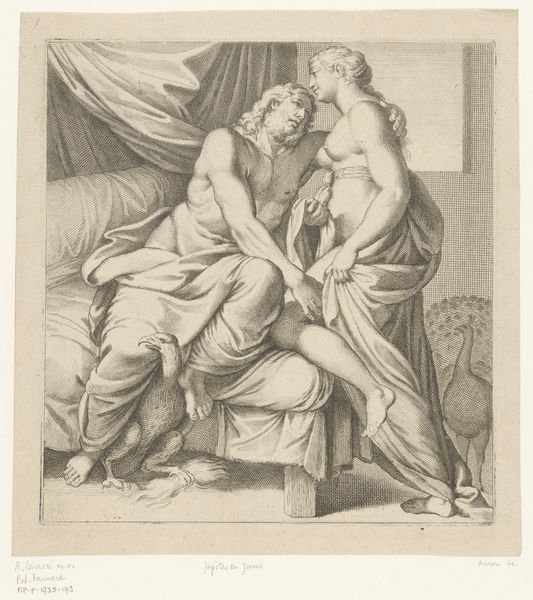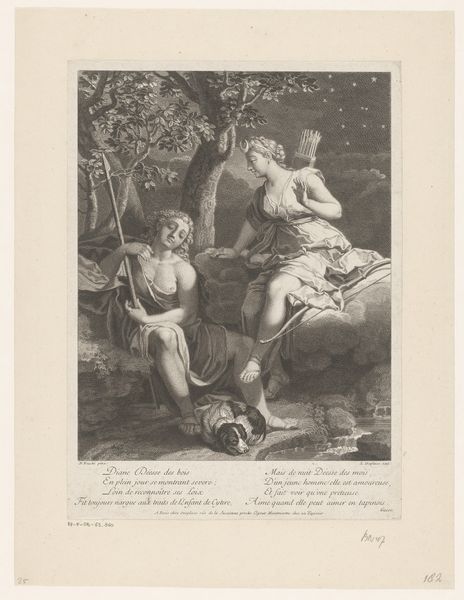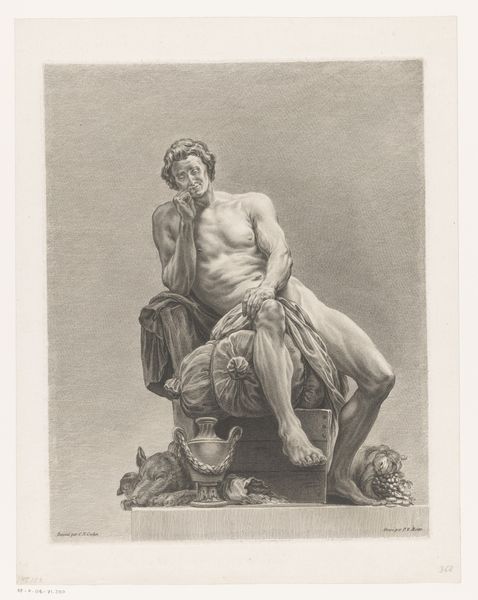
engraving
#
allegory
#
baroque
#
19th century
#
history-painting
#
nude
#
engraving
Dimensions: height 377 mm, width 446 mm
Copyright: Rijks Museum: Open Domain
Curator: Let’s explore “Maria Magdalena in de wildernis,” an engraving from sometime between 1726 and 1791, attributed to Jacques Nicolas Tardieu. Editor: My immediate reaction is that the stark black-and-white medium creates a haunting effect. There's a loneliness, a stillness that’s quite striking, despite the Baroque styling. Curator: It's interesting to see this depiction of Mary Magdalene within the visual language of the Baroque. The work invites us to think about the power dynamics implicit in these depictions – how female penitence is visually framed for consumption within a patriarchal structure. The female nude here becomes symbolic. Editor: Right, there’s definitely a manufactured quality despite the ‘wilderness’ setting. Look at the fine lines; they denote texture to a remarkable extent. Note how light is reflected. It highlights not only her but the book, the skull, and the putto. An artisanal hand has touched every stage here. Curator: And the musical score! That element speaks directly to the history of the Magdalene as a contested figure. The symbolism pushes beyond simplistic readings of sin and redemption. It invites reflection upon the complexities of female agency and spirituality. Editor: Indeed, and to connect it with labor, this engraving would have been printed en masse and circulated. Each pull an application of pressure, materials and skill, each copy speaking back to the first creation. So, is it truly sacred art when its purpose is also so intimately commercial? Curator: That tension – the spiritual and the commercial – is central to understanding how these images functioned within their society. Looking at this from an intersectional perspective reveals a web of beliefs and practices. Editor: Yes, so our image provides insight not simply on art and religion, but into its commercial context, too. These items demonstrate what ordinary people could readily afford to experience. Curator: Precisely. Reflecting on the engraving allows us to unravel the complexities embedded within seemingly simple iconography. Editor: Agreed; viewing the world of making provides a powerful frame through which we can examine the broader material picture and also access ways that lives were transformed at work.
Comments
No comments
Be the first to comment and join the conversation on the ultimate creative platform.
